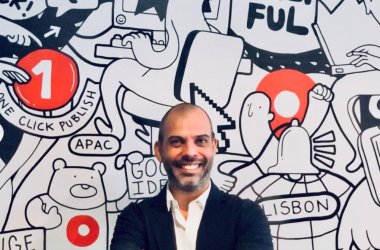 With new technologies seemingly always on the horizon, data exploding, and multiple solutions required to support all the intricacies of business, keeping a hold over your IT is becoming increasingly complicated. Enterprise architecture (EA) tools have emerged to allow CIOs the complete infrastructure visibility they require.
With new technologies seemingly always on the horizon, data exploding, and multiple solutions required to support all the intricacies of business, keeping a hold over your IT is becoming increasingly complicated. Enterprise architecture (EA) tools have emerged to allow CIOs the complete infrastructure visibility they require.
New innovations have never arisen at a faster rate than today. As these trends continue to take companies by storm, EA has emerged as a vital practice to align these technologies with older systems, and to translate business strategy into ROI.
Whilst catching on in the West, EA tools have yet to fully take off on a large scale in the Middle East.
Forrester research found that CIOs currently spend 60 percent of their time as “chief maintenance officers”, meaning they have to devote several hours a day to making sure that all the IT infrastructure and applications are running smoothly.
However, with many industry insiders envisioning a shift to an era where business units are more involved in deciding what their technology needs are and how to achieve them, CIOs are expected to have more time available to managing the innovation at their disposal.
Further research from Gartner has advised corporations to adopt a new style of EA called “emergent architecture”, which it says is necessary to respond to the growing complexity in markets, economies, networks and companies.
“In today’s IT ecosystem, organisations are under pressure to become competitive, while maintaining profitability,” says Seyed Golkar, Director, Business Solutions, GBM. “Since IT serves as an enabler for the overall business, it is crucial for management to have visibility in this area.
“From a cost perspective, especially for large organisations, the IT-related TCO is also critical because it has an impact over profitability. A company that has a clear view over its IT landscape — both assets and operations — is perfectly capable of deciding what needs to be kept under internal control for strategic or tactical reasons, and what should be outsourced in order to optimise the TCO and maintain profitability.”
Subsequently, businesses must rethink traditional ways of working and engaging with customers, employees and other stakeholders..
For any 21st-century business, speed and agility are key attributes. Organisations with a clear view of their IT take a more strategic and systematic approach to changes for greater competitive advantage, according to Stephen Fernandes, Assistant VP and Head of Middle East Operations, Cognizant.
“These include developing more flexible business processes and technology infrastructures, and building stronger and fluid connections with internal and external customers,” he says. “A coherent view of EA guides organisations through their transformational journey, affording better focus on strategic use of emerging technologies and significantly reducing the time-to-market.”
If everything works fine, and no proposed, planned, or ad-hoc changes disturb the status-quo, then CIOs don’t need a clear view of the architecture, says Peter Lakhegyi, GM, Atoll Technologies ME.
But in any other case, he adds, they need an understanding of what builds up the company and how IT supports the business processes. “This information is vital to plan and successfully deploy any change.”
Keeping discipline
EA should be seen as a discipline and set of tools that helps an organisation better understand its business and IT, and address systemic redundancy, process gaps, technology gaps and other symptoms that generally result from misaligning business and IT architectures.
As long as these gaps exist, Golkar says, the company’s overall performance is impacted, and this may lead, in the end, to wastage in technology investment and a lack of flexibility and competitiveness.
Organisations that do not have a clear view of their EA can end up compromising their competitive edge, Fernandes adds.
“Their inability to predict, plan and create the desired future of their business model can make it difficult for them to respond to emerging challenges and opportunities brought about by transformative forces.”
However, Peter Lakhegyi, GM, Atoll Technologies ME, is keen to point at that EA tools do not “do magic by themselves”, adding that enterprises need to develop an “EA culture” to be successful.
“Tools can, however, take it to the next level, but only on solid corporate cultural foundations,” he adds.
The necessity of EA tools is therefore clear. However, despite big regional names like Ooredoo, DP World and SEHA invested in the technology — and indeed singing its praises — general uptake has remained slow.
Whilst acknowledging that some clients in the region have already realised the potential of EA, Fernandes believes the key now is for the vendors to increase awareness of the big picture.
“Clients are increasingly tapping our business consulting and strategic service offerings to define EA and implement roadmap services,” he says.
Lakhegyi urges CIOs to not “sit in the ivory tower” and to always aim to deliver short- and long-term value to other departments. “Aim to achieve business outcomes and communicate results well,” he says.
Finding the tools
Once an organisation has been sold on the benefits of EA, the next step is to find the right tools for them.
When it comes to EA tools, the market offers two main categories: business intensive tools, which are more appealing to business people; and very technical ones, with strong competencies in terms of making conceptual models into something executable.
In order to make decisions, Golkar says a CIO needs to clearly establish the EA focus and primary goals for his specific organisation.
“Once this is achieved,” he adds, “consulting will help assess the various tools, in terms of modeling capabilities, decision support, presentation layer, configurability, usability, frameworks and standards supported.”
Fernandes agrees that the tool choice should be predicated on the organisation’s need and architectural complexity.
Enterprise architects are challenged with numerous problems that are beyond the capability of regular office-productivity tools.
“They need to manage a large number of artifacts, capture complex relationships between many elements across those artifacts, conduct gap analysis, impact analysis, scenario planning and modeling, and present information to stakeholders,” Fernandes says. “The tools should also integrate with project and portfolio management solutions for ensuring the best investment mix of projects to execute business strategy.
“To select the right tool, organisations must understand the available tools’ capabilities and think through how they can be used in the EA programme. That means organisations must research the tools, find case studies of how they’ve provided value in a similar industry, and determine which features and functions would be of best use.”
Some organisations may feel more inclined to opt for the industry-independent EA frameworks available, while others may go for the more IT-domain-specific options.
Whatever they choose, they must keep in mind that EA must be defined in conjunction with their business strategy, and then placed in the overall business context.
“A pragmatic approach is also recommended, based on incremental steps and accompanied by metrics, in order to measure the effectiveness of the EA programme,” says Adela Cornescu, CEO, BPMWave.
IT divisions should not see EA as a one-time initiative, she adds, but as an ongoing effort, and, for this to happen, an accurate governance programme is needed.
Furthermore, organisations should consider the costs if a major project fails due to inappropriate architectural planning, or gets extended again and again for bad scoping. Or indeed the reputation loss if their systems are down in peak hours, or they fail to go to market with a new product before the competition.
“Many times the direct financial losses on such are multiple times more than an EA tool. But again, an EA tool by itself is nothing — you need to have the down-to-earth EA practice, too,” Lakhegyi says.
CIOs must be wary that investments in EA are more long-term in nature. Organisations must gather all information about the anticipated benefits of EA from the IT and business user perspective.
Analysing the interrelationships between business and technology capabilities, and looking at the layers separately and together, will become increasingly important.
“Even if this kind of analysis can be achieved manually, with great effort as a one-off project using simple Office tools, it will be impossible to maintain manual models in complex environments, and the value in the effort will be quickly lost as the information gets out of date,” Fernandes says.
“An EA project can deliver a substantial return on investment in the longer term by making the organisation agile, fast and ready to embrace the changing market needs and trends. It enables more innovation and provides a strong technology infrastructure, increasing the reuse of existing system and system components, and reducing risks.”





